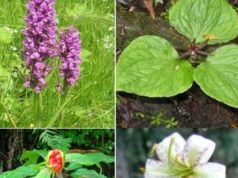Spread of Ghaneri, Visaduri and Carrot Grass Endangers Local Biodiversity, Scientists Urge Immediate Action
Shimla – The rapid spread of invasive plant species in Himachal Pradesh is posing a serious threat to the state’s native vegetation, particularly medicinal plants. Among the major invasive species disrupting the local ecosystem are Lantana camara (ghaneri), Ageratum conyzoides (visaduri) and Parthenium hysterophorus (carrot grass). Research conducted by the Botanical Survey of India has revealed that these species, initially introduced for horticultural purposes, have now grown into a significant ecological concern.
Ghaneri and visaduri, originally admired for their attractive flowers and leaves, were planted to beautify homes, gardens, and public spaces. However, over time, their unchecked spread has led to unintended consequences. Ghaneri, for instance, forms dense thickets that compete with local flora for essential resources like sunlight and soil nutrients. This aggressive competition stifles the growth of indigenous plants, leading to a sharp decline in biodiversity. Carrot grass poses a different challenge by releasing chemical elements that suppress the growth of surrounding vegetation, further degrading the environment.
The invasive species have become a pressing concern for environmentalists, with scientists warning that if immediate action is not taken, the state’s biodiversity could suffer irreparable damage. A study by the GB Pant Institute of Himalayan Environment and Development has identified 125 invasive plants across Himachal Pradesh, most of which originated from America. These plants are not only competing with native species but are also altering soil structure and the overall ecosystem.
According to the study, 44 percent of these invasive species thrive in barren lands, 20 percent spread across cultivated fields, 16 percent along roadsides, and 9 percent in forests. The unchecked growth of invasive species is now being recognized as a major environmental challenge.
Environmental experts are calling for concrete measures to control the spread of invasive plants. They emphasize the need for collective efforts to raise awareness about the threat posed by these species and to implement strategies for their management. If the spread of these plants is not curbed in time, the state’s diverse and unique plant life, particularly its medicinal plants, could face long-term devastation.







